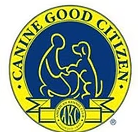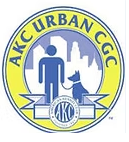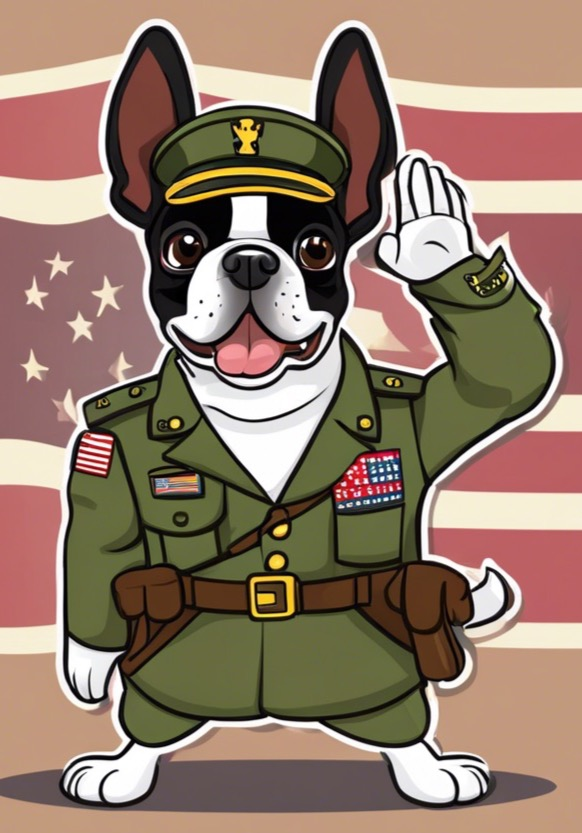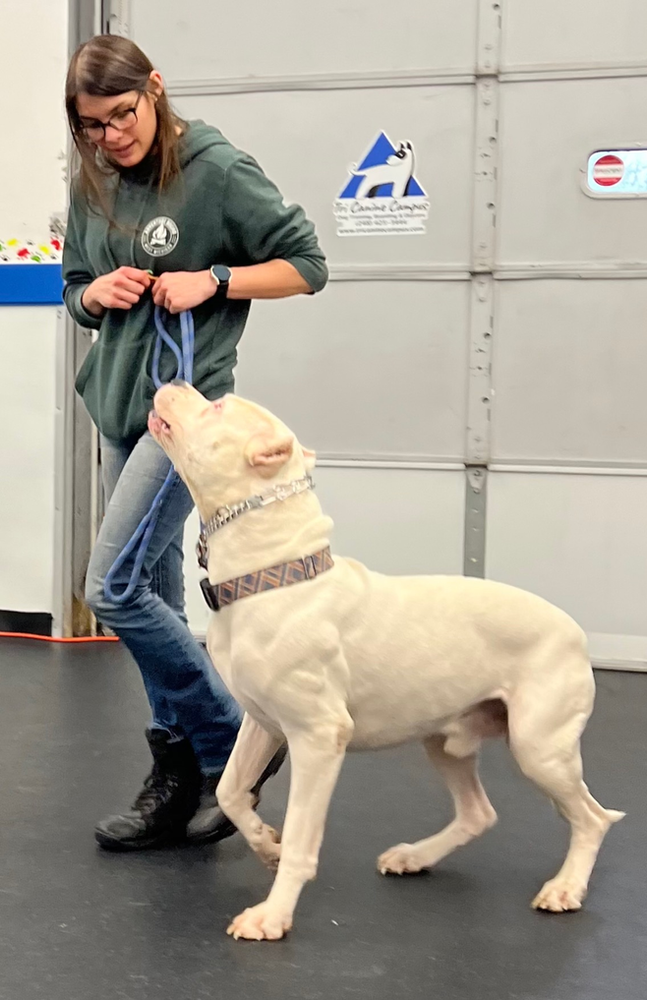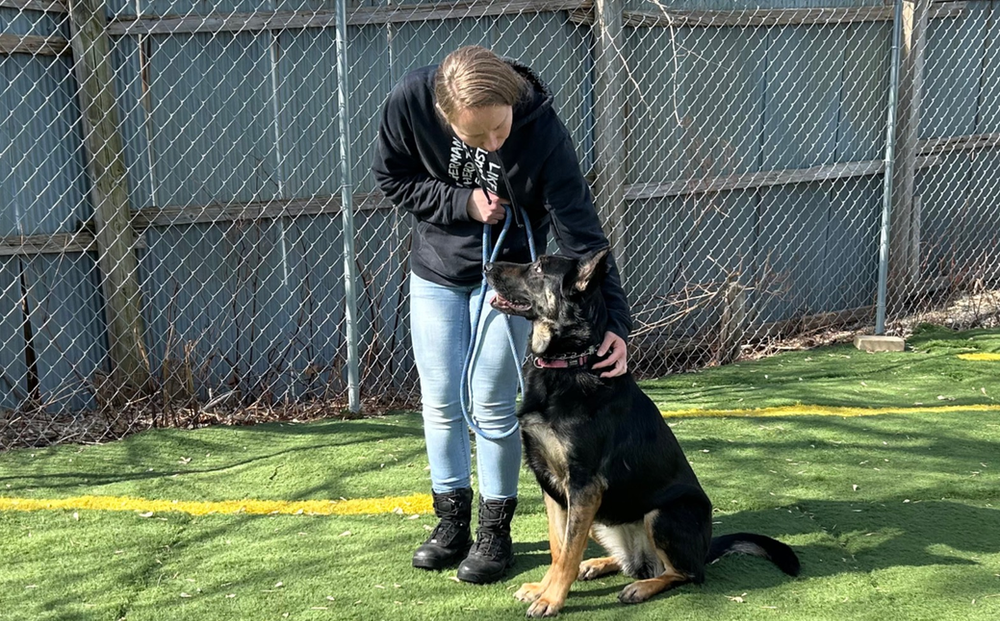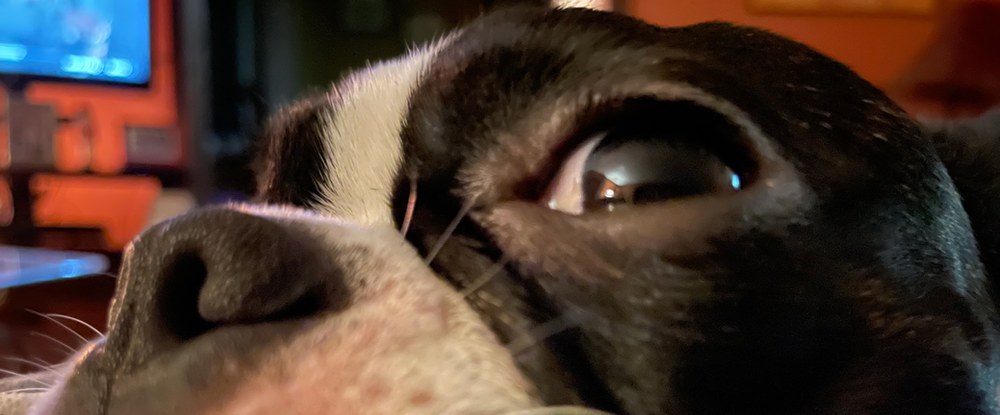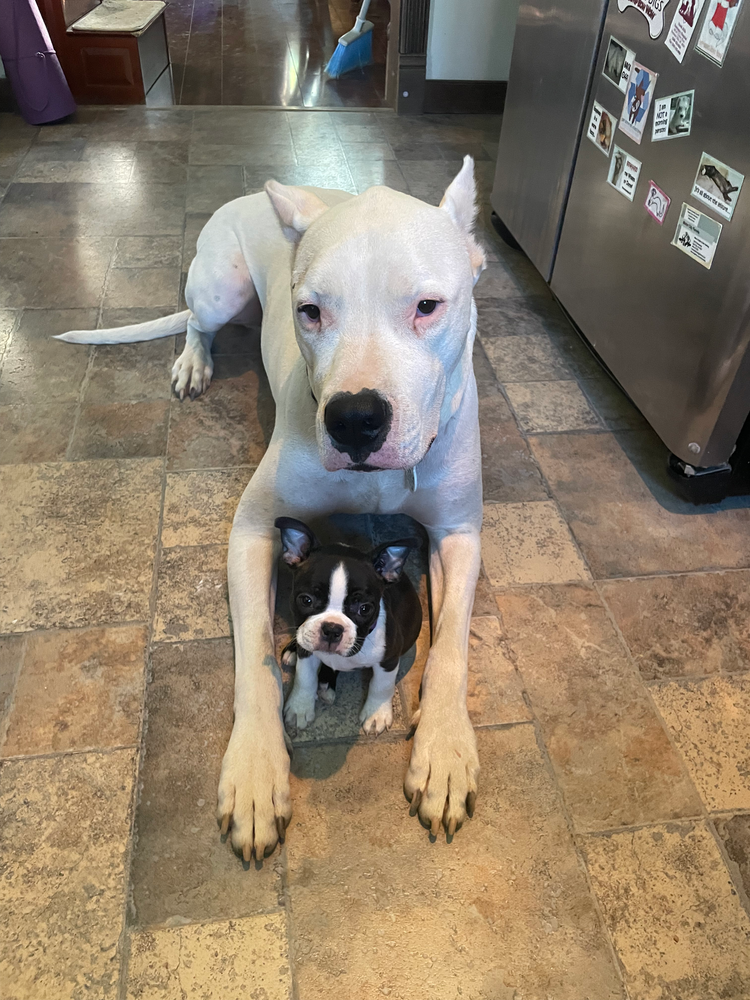Puppy Food Possessiveness
Stefanie Kunzelman • 29 January 2025
Puppies and Food Possessiveness

One of the most annoying and often scary behaviors a dog can exhibit is Food Possessiveness towards people.
In this blog we are going to address the topic of food possessiveness in puppies.
The best way to address this behavior is when the dog is a puppy! If you Google the topic or go on YouTube, you will find a multitude of information on the subject. One thing that I have noticed is that a lot of those people providing the information seem to be stuck on their ‘method’. What I would like to emphasize is that nearly all the methods that I have seen are good! The best methods that I would recommend are listed below.
Things you should do (for puppies!):
In this blog we are going to address the topic of food possessiveness in puppies.
What is a puppy?
You could talk to 20 different people and get 20 different answers. In the world of training, the vast majority of trainers will tell you that a puppy (that is to be trained) is between the ages of 6 and 20 weeks.
What are the defining characteristics of a puppy that is food possessive?
What are the defining characteristics of a puppy that is food possessive?
- Growling / flashing of teeth, stiffening of the body when you are near the food bowl when the dog is eating
- Growling / flashing of teeth, stiffening of the body when your hand approaches the food bowl while the dog is eating.
- Growling / flashing of teeth, stiffening of the body when you are petting the dog while it is eating
Why does a puppy (and dogs) show this bad behavior?
- Simply put, they do not want their food to be taken away.
- Show and ingrain in the puppy that we do NOT intend to take their food away!
The best way to address this behavior is when the dog is a puppy! If you Google the topic or go on YouTube, you will find a multitude of information on the subject. One thing that I have noticed is that a lot of those people providing the information seem to be stuck on their ‘method’. What I would like to emphasize is that nearly all the methods that I have seen are good! The best methods that I would recommend are listed below.
Things you should do (for puppies!):
- Touching / petting the puppy while it is eating, provoking the bad behavior.
- If the bad behavior is exhibited, continue petting until it seems less then stop
- If there is no bad behavior, stop petting sooner
- Offer higher rewards (to draw the puppy away from its food)
- You must offer something to the puppy that is of higher food value than what they have in their bowl!
- If the pup is being fed kibble then offer a jerky
- If the pup is being fed wet food then offer a food scrap (piece of chicken or steak – can be raw if you know the pup likes it)
- With your hand close to bowl, call their name, entice them and give the treat
- When the pup is used to this, call them off the bowl a few feet before giving the treat, or
- Entice them away from the bowl, while giving the treat, pick up the bowl. Place the bowl back down in front of the pup after a short moment
- Feed the puppy by hand
- With the food bowl on the ground, drop the kibble bit by bit into the bowl. The pup sees the food is coming from you!
- Train with the food
- This is a method often used by dog trainers, the advantages
- The puppy is always hungry and driven to work for the food
- The puppy learns that the food comes from the human
- The puppy does not learn to guard a food bowl in the first place
- Do not ‘correct’ your puppy
- You want to have the most loyal and playful dog!
- Corrections at this age will dampen your pups’ feelings towards you.
- Unless using the training or feed by hand method (breakfast is used as the reward during training), do not constantly intervene in your pups feeding time. It may annoy the pup and possibly have the opposite results!
For more detailed information, the following links have been listed:
1. How to Stop Puppy Resource Guarding
2. How to Deal With FOOD AGGRESSIVE PUPPIES! | Shield K9 Clips
The posting of these links does not necessarily mean that TCC endorses any of the other training methods presented by those authors!
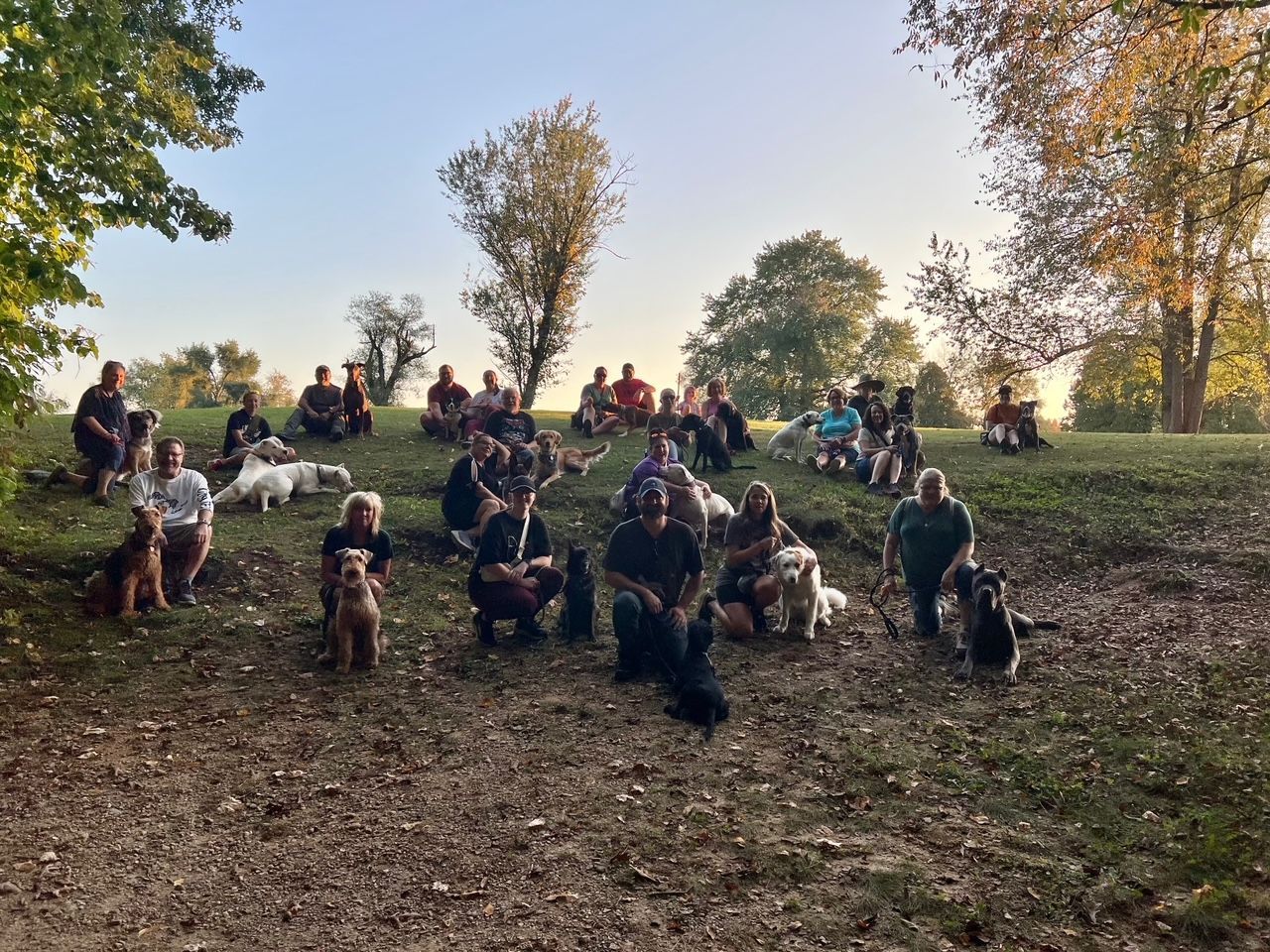
The primary purpose of the Tri Canine Campus (TCC) Pack Walk is to promote a dog’s “neutrality” in a public scenario. What is expected of the dogs during the pack walk: No interaction between any of the dogs. No Interaction with people during the exercises No Reactivity (barking, whining or pulling) What is expected of the handler’s during the pack walk: Attention to the dog’s demeanor Structure and focus the duration of the class Be aware of your surroundings Exercises: Leave your dog with a stranger while you are out of eyesight for a short time. Sit with space to simulated pedestrian traffic. The dog’s focus is on the handler. Sit with reduction of space to others. The dog’s focus to remain on the handler. Down with space to simulated pedestrian traffic. The dog’s focus is on the handler. Down with reduction of space to others. The dog’s focus to remain on the handler. “Weave” command. Walking a dog through simulated ‘high traffic’ conditions while maintaining the dogs focus. Down stay with the handlers at a short distance. Pedestrians walking between the owner and the dog. The dogs are to maintain focus on their handlers. Confidence building through the use of stairs, escalators and elevators. Dogs are to sit in the middle of the stairs and the duration of the escalator / elevator use. Focus should be on the handler. Scenarios: Parks Downtown Stores The Pack Walk is an advanced class offered by TCC. Prior to being allowed on a pack walk, the handler – dog teams have gone through at least several months of and passed the training to learn how to engage and control their dogs through structured exercises. All the dogs attending the Pack Walk have undergone extensive training in impulse control and basic obedience. Some of the handler – dog teams are preparing for or are fine tuning their Therapy Dog / Service Dog training. We have our Pack Walks in Clarkston, Waterford, Auburn Hills, Rochester Hills, and surrounding areas!
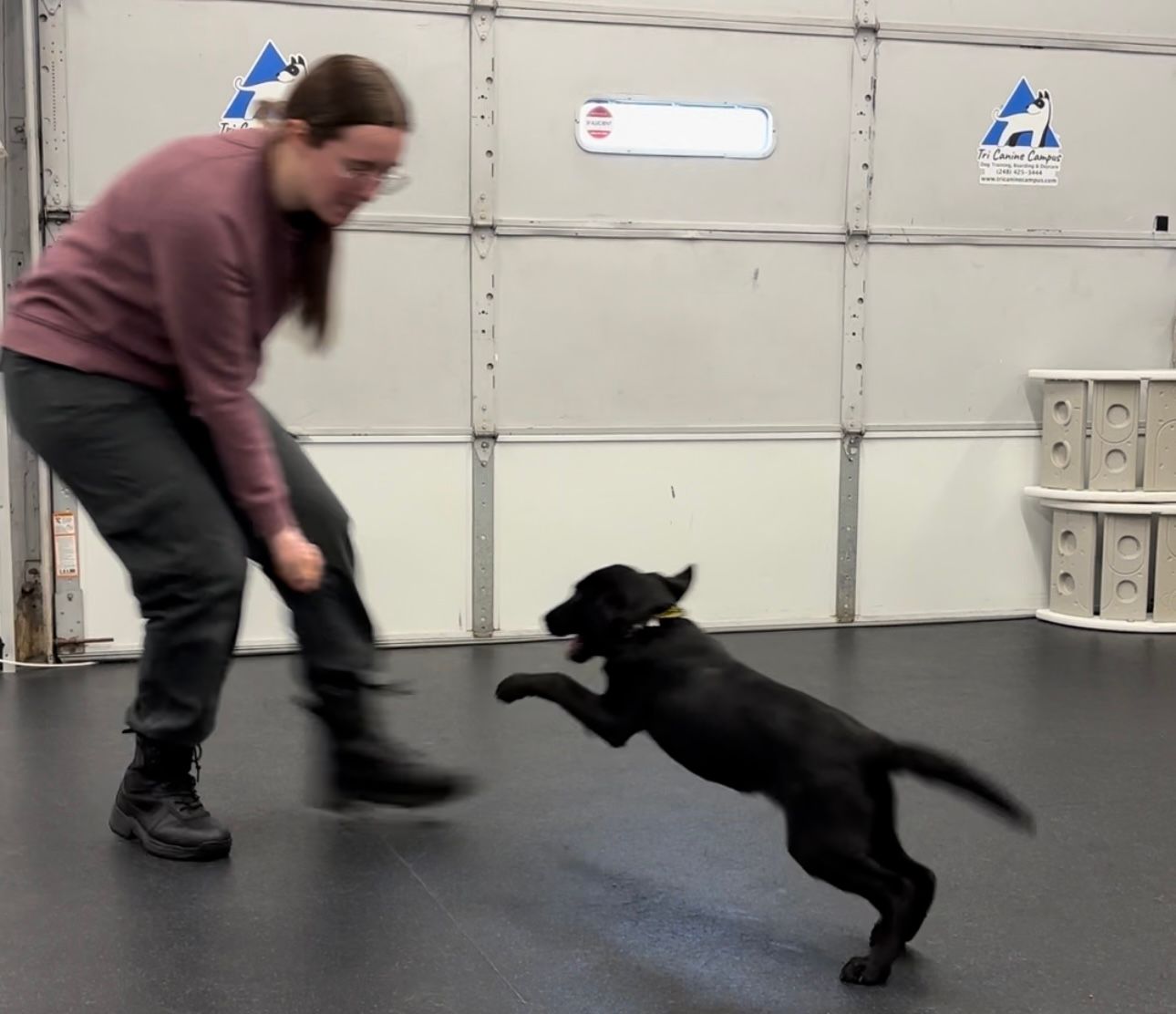
When a professional dog trainer is discussing focus, he is in fact discussing ‘engaging’ WITH your dog. What does the term “engage” mean? It means that you are physically interacting with your pup in a manner that keeps the dog’s attention on you. Why is focus so important? Why does a dog “react” to its surroundings? When a dog sees a squirl and chases after it, it is satisfying its “prey drive”, it is ‘reacting’ to its instinct. When a dog starts barking at another dog, it is satisfying its pack drive, the need to interact with that other dog and be social (whether for good or bad). When a dog sees a scrap of food on the ground and pulls towards it, it is satisfying its food drive. To overcome these drives and have complete focus from our furry friend, we need to be something more interesting than all of the above-mentioned distractions. When a dog ‘engages’ with you, you are providing all of the stimulation that it derives from the above the mentioned scenarios, hence keeping its focus. Someone might ask if training with your dog or working with your dog is engaging them? Well, yes and no. While you are training with your dog, is he/she completely engrossed with you? Do you have your pups’ undivided attention? If the answer is ‘no’, or ‘mostly’, or only ‘sometimes’ then “working” with your dog is not truly having him/her engage WITH you. Is loving on your dog ‘engaging’ them? Well, yes and no, again. If after loving on your dog for an hour you decide to take a walk, is your dog being reactive to its surroundings to a point that you cannot get them focused on you? If the answer here is yes, then ‘love’ is not creating a bond that will enable you to capture your pup’s attention in those trying times. Whatever is getting your dog to react is more important than the attention you have been giving. What does it then mean to “engage” your dog then? It means that you have been offering direct interaction with your pup that makes you more interesting than the environment you find yourself in. When working with puppies, what do the majority desire the most? Treats. When a distraction occurs, you need to be able to one, stop the puppy from ‘engaging’ the distraction. Using a leash solves this problem. Then, offer the puppy something more enticing than the distraction. A high value treat coupled with a higher pitched happy voice and definitely some movement backwards to draw them in, is required to get them ‘engaged’ (excited) with you. You have given the puppy something more interesting than the distraction and his/her focus is now on you. As the puppy ages, treats will become less important and that instinctual prey drive increases. Have you ever seen a puppy clobber the rake while out cleaning up the fall leaves? Chase the mop as it swishes across the kitchen floor? To create a bond that has your dog truly focused on you, this prey drive needs to be developed into “play” drive. By playing with your dog, you are directly satisfying his/her prey drive. The dog knows that it will be rewarded by interacting with you. Not all dogs know how to play, it needs to be taught to them. Two of the most effective toys to use to help with the play drive are a ball and a tug toy. Frisbees also make for an effective training tool. To capture your dogs’ undivided attention, these toys need to be valuable to your dog. That begs the question, if you want to use a ball as the training tool, is having a bunch of balls lying around the house going to help with training? To answer this question, we have to ask ourselves what is valuable to us as a person? Is it something that is readily and easily accessible to us or something that is scarce and hard to obtain? Obviously, those items that are most desired are those that are almost always just out of reach. The tool should only be used when training-playing! The next ingredient, just as important as the tool to be used to encourage play drive, is your energy that you bring to the play. Standing around and just tossing a toy is not getting your pup to engage with you. What happens when all you are doing is throwing the ball? Your dog is concentrating only on the ball. We need that focus on you. To do so, you need to draw your pup into you, not chase them. A good example. You execute a recall, the pup returns to you and you treat the recall. Once the pup has received its reward, it knows the ‘engagement’ is over and its focus ends. However, if once you have given that treat you explosively remove yourself from you dog (run backwards) and reward the pup for again running to you, you have now shown that the reward does not end with the first treat. The dog will play closer attention to you even after the first reward. So, if you can properly engage your dog, you are effectively getting his/her attention or focus which in turn gets them to listen reliably to you. If you want that well-trained or well-mannered dog you need to invest the time and energy into engaging with your dog in a meaningful way. Michael Ellis Training Engagement before Obedience https://www.youtube.com/watch?v=NPw60HX4DI4 Why We Play with Dogs https://www.youtube.com/watch?v=c-wpF4xpSKI
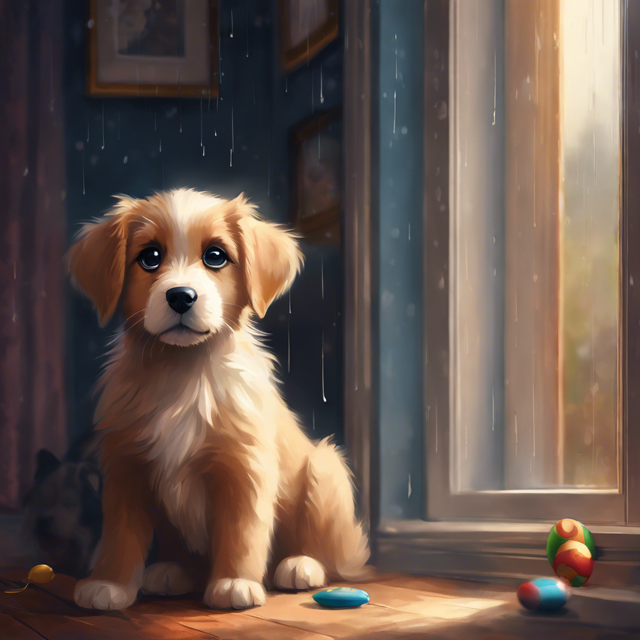
Dog separation anxiety is a common behavioral issue that affects many dogs when they are left alone or are separated from their owners. This anxiety can manifest in various forms of distress and destructive behaviors, which can be troublesome for both the dog and its owner. Understanding the underlying causes, recognizing the symptoms, and implementing effective solutions are essential to managing and alleviating separation anxiety in dogs. Dogs are creatures of habit, and any significant change in their daily routine can trigger anxiety. This could include changes in the owner's work schedule, moving to a new home, or a sudden alteration in the household dynamics, such as the arrival of a new family member or pet. Dogs that have experienced abandonment, abuse, or multiple re-homing situations are more likely to develop separation anxiety. The fear of being left alone again can cause significant stress and anxiety. Dogs that have not been properly trained to cope with being alone may struggle with separation anxiety. Early socialization and gradual acclimatization to periods of solitude are crucial in preventing anxiety from developing. One of the most common signs of separation anxiety is destructive behavior, such as chewing on furniture, scratching doors, or tearing up household items. This behavior is often a result of the dog's attempt to escape or alleviate its anxiety. Dogs with separation anxiety may bark or howl excessively when left alone. This vocalization is a form of distress signaling and can be a significant indicator of anxiety. Despite being house-trained, dogs with separation anxiety may urinate or defecate indoors when left alone. This behavior is often linked to the stress and panic they experience in their owner's absence. Some dogs may try to escape from their confinement areas, such as crates or rooms, causing damage to doors, windows, or even injuring themselves in the process. Physical symptoms of anxiety, such as excessive drooling, panting, or shaking, can also be observed in dogs with separation anxiety. Gradual desensitization involves slowly acclimating the dog to being alone by starting with brief periods of separation and gradually increasing the duration over time. This helps the dog build confidence and reduce anxiety. Providing a safe and comfortable space for the dog, such as a crate or a designated room, can help reduce anxiety. This space should be equipped with the dog's favorite toys, bedding, and items that carry the owner's scent. Implementing positive reinforcement training techniques can help modify the dog's behavior. Rewarding calm behavior and gradually exposing the dog to being alone can help reduce anxiety. Ideally, it is best to start desensitizing dogs while they are still puppies or for the rescued pup, right from the first day they arrive at their new forever home. Begin by identifying what should be a safe space for your dog. The crate is recommended as it is practical because it can be taken with you on vacation or brought to another person’s home that is intending to watch out for the pup. Do not force your dog into the crate as it is to become a safe space. Reducing or eliminating separation anxiety will only happen through positive association with their safe space. Begin by tossing treats into the crate so the dog may find them and be rewarded for entering the crate. Once the dog is entering on its own to look for treats, place a treat in the crate and close the door. Position yourself comfortably next to the crate. The dog will begin to get excited, whining and scratching to get out. It is in this phase that you, the owner must remain strong. Whether out of sympathy for the pup or because the noise is so annoying, you will be inclined to let the dog out. Do not! You will be rewarding the dog for its bad behavior. Once your dog has calmed down, this may take several minutes or even longer, open the door, let your dog out and reward with treats and love. Repeat the above sequence many times a day. When your dog begins to relax right away when the door is closed, then you need to begin to put distance between you and the crate. When you are able, create that distance, then you start leaving the room, first for short periods of time and then increasing longer. Once the dog is used to you being away longer and out of sight in the home, then you start going outdoors. Again, start short then gradually increase the duration of the separation. When leaving home, do not give your dog ques that you are leaving for a longer period. Do you say “Goodbye” to your pup before heading to work? Do you say “Goodbye” to your dog when you go to the mailbox? Treat your dog the same way no matter what you are leaving the home for. Ensuring that the dog receives adequate mental and physical stimulation can help alleviate anxiety. Regular exercise, interactive toys, and puzzle feeders can keep the dog engaged and reduce stress levels. In severe cases of separation anxiety, seeking help from a professional dog trainer or a veterinarian may be necessary. They can provide specialized training programs or recommend medication to manage the anxiety. Dog separation anxiety is a challenging issue that requires patience, understanding, and consistent effort from the owner. By identifying the causes, recognizing the symptoms, and implementing effective solutions, owners can help their dogs overcome separation anxiety and lead happier, stress-free lives. The key to success lies in a combination of gradual desensitization, creating a safe environment, providing mental and physical stimulation, and seeking professional help when needed. With dedication and empathy, dog owners can significantly improve their pets' well-being and strengthen their bond. Videos with additional information / Technicks Cesar Millan https://www.youtube.com/watch?v=BmVSLqCh-RI Beckman https://www.youtube.com/watch?v=hAoDtfpBwVs Steve Mann https://www.youtube.com/watch?v=Vps9Es0T_5E The posting of these links does not necessarily mean that TCC endorses any of the other training methods presented by those authors! References • American Kennel Club. (2021). Separation Anxiety in Dogs. Retrieved from [URL] • PetMD. (2020). How to Help a Dog with Separation Anxiety. Retrieved from [URL] • ASPCA. (2019). Dog Behavior: Separation Anxiety. Retrieved from [URL]
